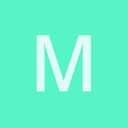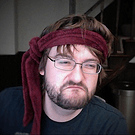Not sure if it’s a bug or if I’m missing something with the new console, but when using ui.cursor.visible=false the console becomes ‘unclickable’.
For example in 08_Decals.lua (2 modified lines identified with ‘*****’):
[spoiler][code]
– Decals example.
– This sample demonstrates:
– - Performing a raycast to the octree and adding a decal to the hit location
– - Defining a Cursor UI element which stays inside the window and can be shown/hidden
– - Marking suitable (large) objects as occluders for occlusion culling
– - Displaying renderer debug geometry to see the effect of occlusion
require “LuaScripts/Utilities/Sample”
local scene_ = nil
local cameraNode = nil
local yaw = 0.0
local pitch = 0.0
local drawDebug = false
function Start()
– Execute the common startup for samples
SampleStart()
-- Create the scene content
CreateScene()
-- Create the UI content
CreateUI()
-- Setup the viewport for displaying the scene
SetupViewport()
-- Hook up to the frame update and render post-update events
SubscribeToEvents()
end
function CreateScene()
scene_ = Scene()
-- Create octree, use default volume (-1000, -1000, -1000) to (1000, 1000, 1000)
-- Also create a DebugRenderer component so that we can draw debug geometry
scene_:CreateComponent("Octree")
scene_:CreateComponent("DebugRenderer")
-- Create scene node & StaticModel component for showing a static plane
local planeNode = scene_:CreateChild("Plane")
planeNode.scale = Vector3(100.0, 1.0, 100.0)
local planeObject = planeNode:CreateComponent("StaticModel")
planeObject.model = cache:GetResource("Model", "Models/Plane.mdl")
planeObject.material = cache:GetResource("Material", "Materials/StoneTiled.xml")
-- Create a Zone component for ambient lighting & fog control
local zoneNode = scene_:CreateChild("Zone")
local zone = zoneNode:CreateComponent("Zone")
zone.boundingBox = BoundingBox(-1000.0, 1000.0)
zone.ambientColor = Color(0.15, 0.15, 0.15)
zone.fogColor = Color(0.5, 0.5, 0.7)
zone.fogStart = 100.0
zone.fogEnd = 300.0
-- Create a directional light to the world. Enable cascaded shadows on it
local lightNode = scene_:CreateChild("DirectionalLight")
lightNode.direction = Vector3(0.6, -1.0, 0.8)
local light = lightNode:CreateComponent("Light")
light.lightType = LIGHT_DIRECTIONAL
light.castShadows = true
light.shadowBias = BiasParameters(0.00025, 0.5)
-- Set cascade splits at 10, 50 and 200 world units, fade shadows out at 80% of maximum shadow distance
light.shadowCascade = CascadeParameters(10.0, 50.0, 200.0, 0.0, 0.8)
-- Create some mushrooms
local NUM_MUSHROOMS = 240
for i = 1, NUM_MUSHROOMS do
local mushroomNode = scene_:CreateChild("Mushroom")
mushroomNode.position = Vector3(Random(90.0) - 45.0, 0.0, Random(90.0) - 45.0)
mushroomNode.rotation = Quaternion(0.0, Random(360.0), 0.0)
mushroomNode:SetScale(0.5 + Random(2.0))
local mushroomObject = mushroomNode:CreateComponent("StaticModel")
mushroomObject.model = cache:GetResource("Model", "Models/Mushroom.mdl")
mushroomObject.material = cache:GetResource("Material", "Materials/Mushroom.xml")
mushroomObject.castShadows = true
end
-- Create randomly sized boxes. If boxes are big enough, make them occluders. Occluders will be software rasterized before
-- rendering to a low-resolution depth-only buffer to test the objects in the view frustum for visibility
local NUM_BOXES = 20
for i = 1, NUM_BOXES do
local boxNode = scene_:CreateChild("Box")
local size = 1.0 + Random(10.0)
boxNode.position = Vector3(Random(80.0) - 40.0, size * 0.5, Random(80.0) - 40.0)
boxNode:SetScale(size)
local boxObject = boxNode:CreateComponent("StaticModel")
boxObject.model = cache:GetResource("Model", "Models/Box.mdl")
boxObject.material = cache:GetResource("Material", "Materials/Stone.xml")
boxObject.castShadows = true
if size >= 3.0 then
boxObject.occluder = true
end
end
-- Create the camera. Limit far clip distance to match the fog
cameraNode = scene_:CreateChild("Camera")
local camera = cameraNode:CreateComponent("Camera")
camera.farClip = 300.0
-- Set an initial position for the camera scene node above the plane
cameraNode.position = Vector3(0.0, 5.0, 0.0)
end
function CreateUI()
– Create a Cursor UI element because we want to be able to hide and show it at will. When hidden, the mouse cursor will
– control the camera, and when visible, it will point the raycast target
local style = cache:GetResource(“XMLFile”, “UI/DefaultStyle.xml”)
cursor = ui.root:CreateChild(“Cursor”)
cursor:SetStyleAuto(style)
ui.cursor = cursor
cursor.visible = false – Temporarily hide cursor **************************************************************
– Set starting position of the cursor at the rendering window center
cursor:SetPosition(graphics.width / 2, graphics.height / 2)
-- Construct new Text object, set string to display and font to use
local instructionText = ui.root:CreateChild("Text")
instructionText.text =
"Use WASD keys to move\n"..
"LMB to paint decals, RMB to rotate view\n"..
"Space to toggle debug geometry\n"..
"7 to toggle occlusion culling"
instructionText:SetFont(cache:GetResource("Font", "Fonts/Anonymous Pro.ttf"), 15)
-- The text has multiple rows. Center them in relation to each other
instructionText.textAlignment = HA_CENTER
-- Position the text relative to the screen center
instructionText.horizontalAlignment = HA_CENTER
instructionText.verticalAlignment = VA_CENTER
instructionText:SetPosition(0, ui.root.height / 4)
end
function SetupViewport()
– Set up a viewport to the Renderer subsystem so that the 3D scene can be seen
local viewport = Viewport:new(scene_, cameraNode:GetComponent(“Camera”))
renderer:SetViewport(0, viewport)
end
function SubscribeToEvents()
– Subscribe HandleUpdate() function for processing update events
SubscribeToEvent(“Update”, “HandleUpdate”)
-- Subscribe HandlePostRenderUpdate() function for processing the post-render update event, during which we request
-- debug geometry
SubscribeToEvent("PostRenderUpdate", "HandlePostRenderUpdate")
end
function MoveCamera(timeStep)
– Right mouse button controls mouse cursor visibility: hide when pressed
–ui.cursor.visible = not input:GetMouseButtonDown(MOUSEB_RIGHT) *************************************************
-- Do not move if the UI has a focused element (the console)
if ui.focusElement ~= nil then
return
end
-- Movement speed as world units per second
local MOVE_SPEED = 20.0
-- Mouse sensitivity as degrees per pixel
local MOUSE_SENSITIVITY = 0.1
-- Use this frame's mouse motion to adjust camera node yaw and pitch. Clamp the pitch between -90 and 90 degrees
-- Only move the camera when the cursor is hidden
if not ui.cursor.visible then
local mouseMove = input.mouseMove
yaw = yaw + MOUSE_SENSITIVITY * mouseMove.x
pitch = pitch + MOUSE_SENSITIVITY * mouseMove.y
pitch = Clamp(pitch, -90.0, 90.0)
-- Construct new orientation for the camera scene node from yaw and pitch. Roll is fixed to zero
cameraNode.rotation = Quaternion(pitch, yaw, 0.0)
end
-- Read WASD keys and move the camera scene node to the corresponding direction if they are pressed
if input:GetKeyDown(KEY_W) then
cameraNode:Translate(Vector3(0.0, 0.0, 1.0) * MOVE_SPEED * timeStep)
end
if input:GetKeyDown(KEY_S) then
cameraNode:Translate(Vector3(0.0, 0.0, -1.0) * MOVE_SPEED * timeStep)
end
if input:GetKeyDown(KEY_A) then
cameraNode:Translate(Vector3(-1.0, 0.0, 0.0) * MOVE_SPEED * timeStep)
end
if input:GetKeyDown(KEY_D) then
cameraNode:Translate(Vector3(1.0, 0.0, 0.0) * MOVE_SPEED * timeStep)
end
-- Toggle debug geometry with space
if input:GetKeyPress(KEY_SPACE) then
drawDebug = not drawDebug
end
-- Paint decal with the left mousebutton cursor must be visible
if ui.cursor.visible and input:GetMouseButtonPress(MOUSEB_LEFT) then
PaintDecal()
end
end
function PaintDecal()
local result, hitPos, hitDrawable = Raycast(250.0)
if result then
– Check if target scene node already has a DecalSet component. If not, create now
local targetNode = hitDrawable:GetNode()
local decal = targetNode:GetComponent(“DecalSet”)
if decal == nil then
decal = targetNode:CreateComponent(“DecalSet”)
decal.material = cache:GetResource(“Material”, “Materials/UrhoDecal.xml”)
end
– Add a square decal to the decal set using the geometry of the drawable that was hit, orient it to face the camera,
– use full texture UV’s (0,0) to (1,1). Note that if we create several decals to a large object (such as the ground
– plane) over a large area using just one DecalSet component, the decals will all be culled as one unit. If that is
– undesirable, it may be necessary to create more than one DecalSet based on the distance
decal:AddDecal(hitDrawable, hitPos, cameraNode.rotation, 0.5, 1.0, 1.0, Vector2(0.0, 0.0), Vector2(1.0, 1.0))
end
end
function Raycast(maxDistance)
local hitPos = nil
local hitDrawable = nil
local pos = ui.cursorPosition
-- Check the cursor is visible and there is no UI element in front of the cursor
if (not ui.cursor.visible) or (ui:GetElementAt(pos, true) ~= nil) then
return false, nil, nil
end
local camera = cameraNode:GetComponent("Camera")
local cameraRay = camera:GetScreenRay(pos.x / graphics.width, pos.y / graphics.height)
-- Pick only geometry objects, not eg. zones or lights, only get the first (closest) hit
local octree = scene_:GetComponent("Octree")
local result = octree:RaycastSingle(cameraRay, RAY_TRIANGLE, maxDistance, DRAWABLE_GEOMETRY)
if result.drawable ~= nil then
-- Calculate hit position in world space
hitPos = cameraRay.origin + cameraRay.direction * result.distance
hitDrawable = result.drawable
return true, hitPos, hitDrawable
end
return false, nil, nil
end
function HandleUpdate(eventType, eventData)
– Take the frame time step, which is stored as a float
local timeStep = eventData:GetFloat(“TimeStep”)
-- Move the camera, scale movement with time step
MoveCamera(timeStep)
end
function HandlePostRenderUpdate(eventType, eventData)
– If draw debug mode is enabled, draw viewport debug geometry. Disable depth test so that we can see the effect of occlusion
if drawDebug then
renderer:DrawDebugGeometry(false)
end
end
[/code][/spoiler]


